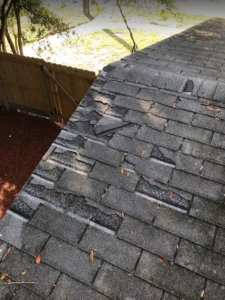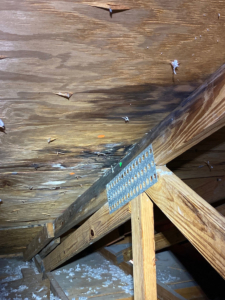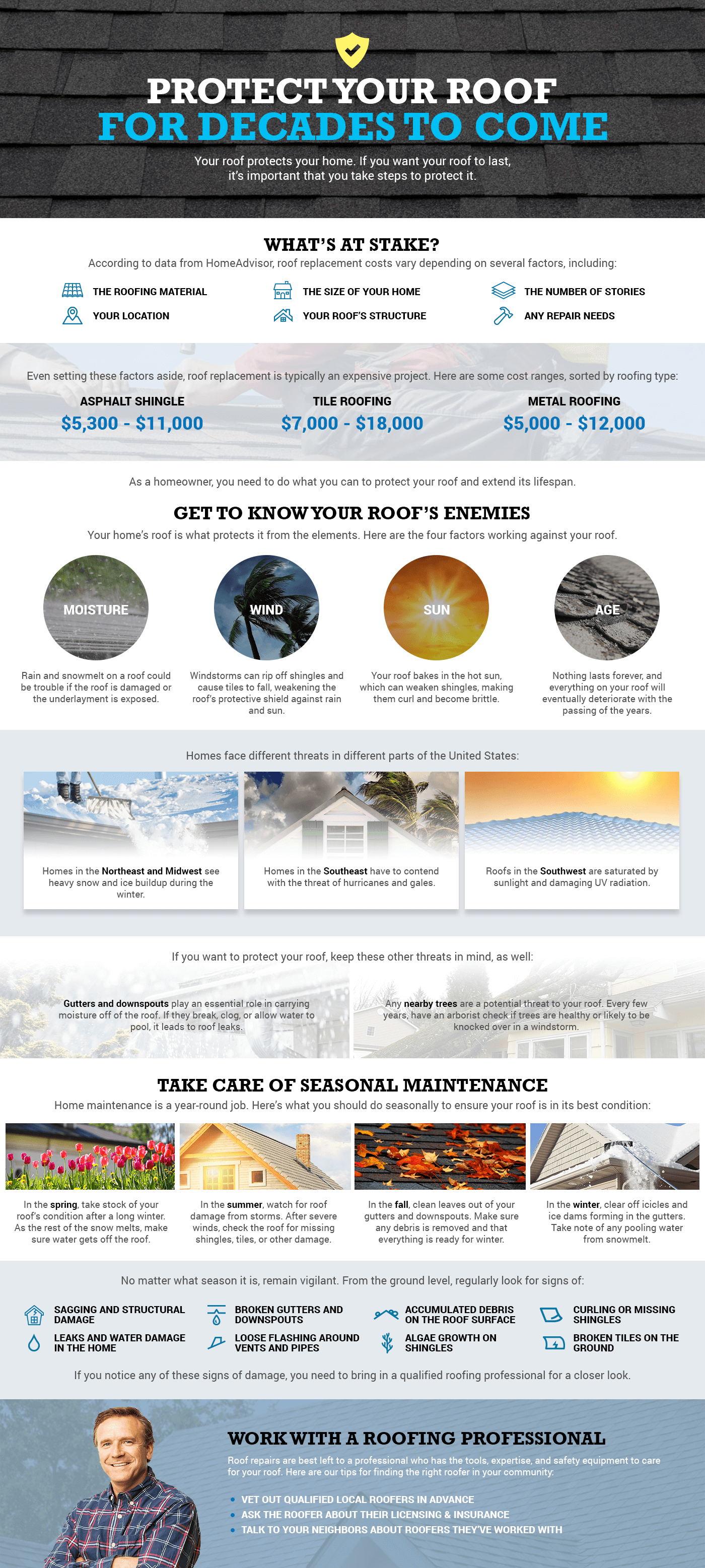If you had to list the most critical components of your home, the roof wouldn’t be too far down that list. After all, the roof is what protects your home and everything inside of it from the elements: rain, hail, wind, and more. However, roofs are far from invincible. They can be damaged, experience wear-and-tear, and eventually fail, leading to the need for a new roof, which can cost you thousands of dollars.
That’s why it’s in your best interest to regularly inspect, maintain, and, if needed, repair the roof. In this article, we’ll review the steps you should take to keep your roof in its best possible shape, as well as the professionals you should work with to ensure that you know exactly what your roof’s condition is.
Act quickly on any roof repair needs
With your home inspection report in hand, you’ll have a much better idea of what your roof needs. Now it’s time to act. Read through the inspection report’s recommendations and call a professional, licensed roofing contractor out for repairs or—if needed—a roof replacement.
It’s tempting to procrastinate on roof repairs. After all, when the weather is nice, it just feels like a project that can wait until next weekend—or the weekend after that. However, every day you wait is another day your home is potentially exposed to further damage. Any moisture that gets through the protective material and comes in contact with the roof structure is eventually going to cause a leak, which just compounds your problems and may lead to mold growth inside your home.
Your roof repair needs to become your priority. If you haven’t had the chance to vet out some trustworthy roofers, you might want to talk to your home inspector and see if they have any recommendations.


Regularly examine your roof from the ground level
Set aside the time every month to do a quick walk around the perimeter of your home and look at the roof line. In many cases, signs of trouble can be seen from the ground level. If your home has a shingle roof, you’ll want to look for fallen, curling, or missing shingles. This could mean that the roof’s underlayment is now exposed to the elements, including moisture. On a tile roof, broken tiles on the ground around your home indicate a similar issue.
No matter what type of roof your home has, you’ll always want to examine it directly after a storm. Even seemingly impervious metal roofs can be damaged by flying tree branches and debris. By taking steps to assess and repair the damage now, you can prevent future roof leaks, and protect your home.
If you feel you the need to get a closer look, safely set up a ladder alongside the home. Have a friend, neighbor, or family member steady the ladder as you climb, and adhere to all the precautions on the warning label—including not climbing higher than the maximum allowable step. From this elevated position, you’ll be able to better see any damage, such as broken tiles that have remained in place. However, never climb out onto the roof. This is incredibly dangerous and should only be done by an experienced roofer or home inspector with the correct safety equipment.
Schedule a home inspection
If you’re concerned about the state of your roof—or other parts of your home, for that matter—you should strongly consider scheduling a home inspection. While most people associate home inspections with buying or selling a home, they’re actually a useful way for homeowners to get a detailed status report on their property. An experienced home inspector will walk through and analyze just about everything, from the foundation on up to the roof.
For homeowners looking to turn over a new leaf and start a better maintenance plan their home, a home inspection is a great way to kick things off. The inspection report you’ll receive can serve as your comprehensive to-do list. No more surprises or sudden emergencies: you’ll know the status of just about everything in your home, including any impending problems.
Be proactive and extend the lifespan of your roof
Talk to your roofer or home inspector about other things you can do to protect your roof. This may include replacing any failing gutters or downspouts, or removing overhanging trees that might pose a threat to the roof structure the next time a storm rolls into town. This type of vigilance can really end up saving you a lot of headache—not to mention money—in the future.
To learn more about your roof’s seasonal maintenance needs and what factors influence its overall lifespan, check out this helpful infographic:

Call or Email Us Today!
Buying or selling a home in the Jacksonville FL area? Our detailed home inspection consists of a thorough examination of all systems and components of the home. See one of our sample home inspection reports and read our 5-star home inspection Jacksonville FL reviews. We’re always here to answer any questions, whether it’s weeks, months or years after your home inspection. Let our local, Jacksonville FL home inspectors help you make an informed decision.
Bold City Home Inspections provides home inspection services to all of Duval, St. Johns, Clay and Nassau counties. Click the button below for a FREE, no-obligation home inspection quote:
Comments are closed.
Navigation
Business Information
Atlantic Beach, FL 32233
Hours:
Mon – Fri 8am – 6pm
Sat – Sun 8am – 3pm
Home Inspector Proudly Serving:
Home Inspector Blog
- Common Home Inspection Findings in Homes Built Before 1950
- Benefits of Air Quality Testing
- Things to Look for When Touring a Home
- How Long do Asphalt Roof Shingles Actually Last?
- How Long Does a Home Inspection Take?
- Top Tips to Reduce HVAC Energy Costs and Lower Your Energy Bill
- A Basic Guide to Swimming Pool Leaks for Pool Owners





Thanks for sharing. The roofing material that lasts the longest are concrete, clay or slate tiles. These materials significantly outperform other natural products like wood shakes or any manufactured roofing materials including asphalt shingles and metal roofing.
Regards,
Kurt